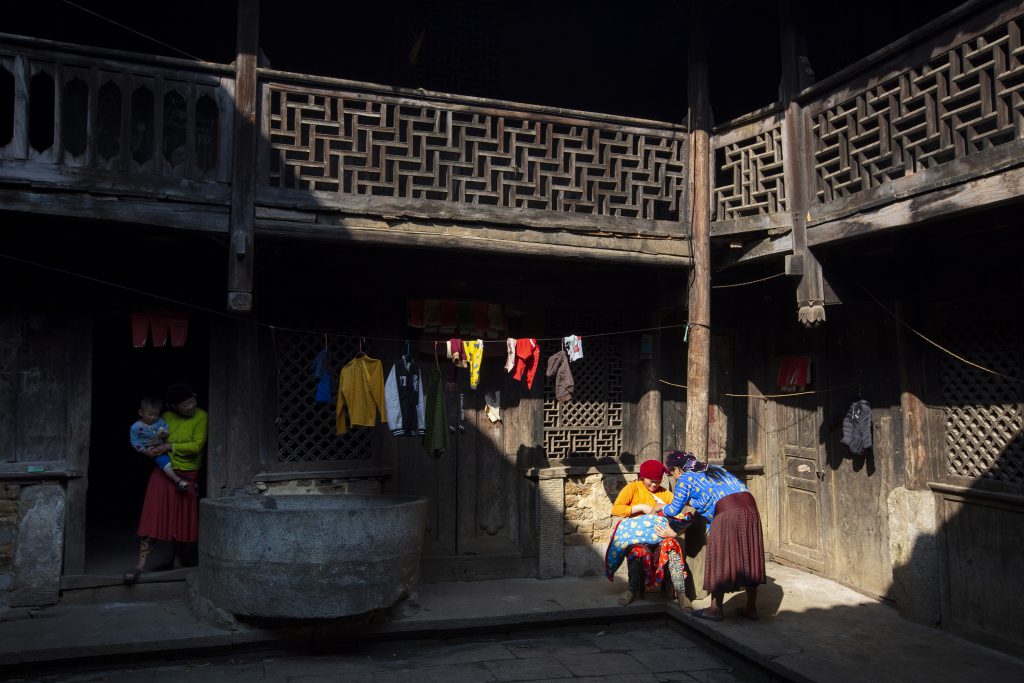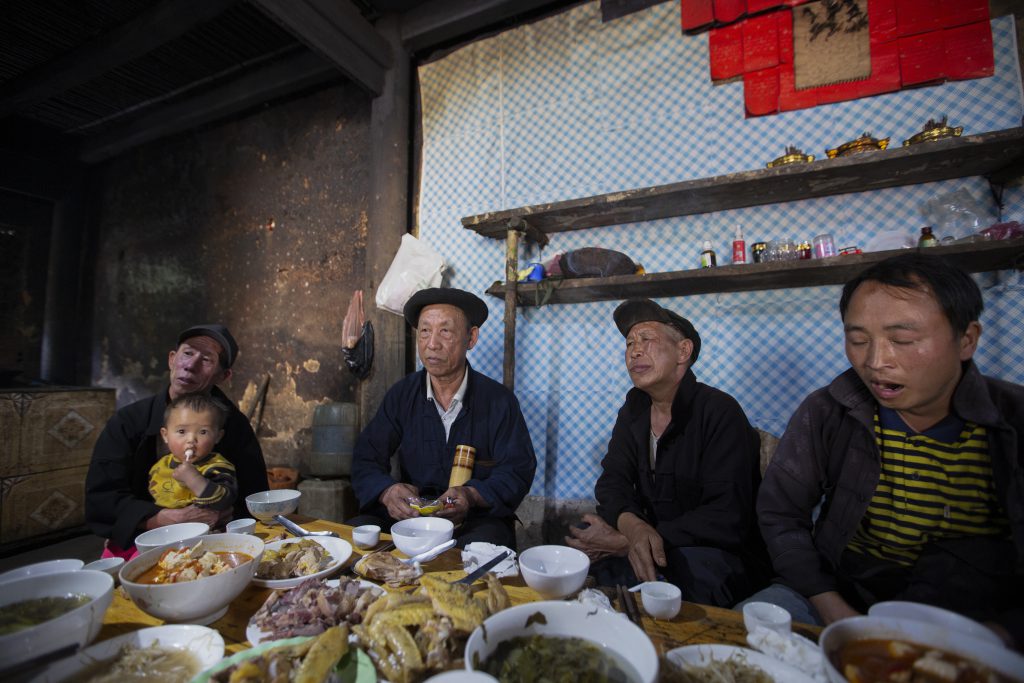Nguyen Huu Thong
When discussing the iconic architecture of the Dong Van Stone Plateau (Ha Giang), most people think of the Vuong Family Mansion. Few know that about 2km away lies an even older house that’s believed to be the architectural prototype of the Vuong Family Mansion. Belonging to the Vu family, this historic house lies in Ha Sung hamlet, Lung Tao commune, Dong Van district.
Built over a century ago, the house was constructed by skilled craftsmen from the Yunnan region of China. It features symmetrical architecture, with communal living and worship spaces in the front and center, and family living spaces on either side.

Entering through the main door, you are met with stone steps hewn from solid rocks weighing hundreds of kilograms, meticulously carved and neatly arranged. A H’Mong proverb states: “Wealth lies on the stone; hard labour brings warmth and fullness“. Living in a land covered in rocks, it is understandable that stone plays a dominant role in both the physical and spiritual lives of the local people. Stone bonds, envelops, and shelters the people across generations. Human hands transform cold, harsh mountain rocks into fences, steps, column bases, grinding mills, bathtubs, etc. This ancient house in Ha Sung is full of the culture of the H’Mong people. It’s easy to spot intricately carved stone objects such as steps, the floor, house foundations, water tank, and column bases. H’Mong people honor and live closely with nature. They transform familiar objects into patterns on stones. Most notable are the patterns that symbolize growth, including a poppy pattern and a flax thread pattern.
Like other traditional H’Mong homes, the Vu family’s house in Ha Sung features walls made from densely packed earth, ranging from 40 to 60 cm thick. These walls provide warmth in winter and coolness in summer. Over 100 years, the walls have become mottled and artistically marked by the passage of time. The house has become like a work of art, standing against a grey stone backdrop.

Besides stone, wood is used extensively by the H’Mong. The most common wood in their life is from Cunninghamia trees, which are prevalent in the stone plateau and symbolize the spirit of the H’Mong people. They are straight-growing, robust, and enduring. Cunninghamia wood is fashioned into plow handles, livestock troughs, and coffins, and used to build houses. Inside the ancient house of Ha Sung, Cunninghamia wood is seen everywhere, primarily in the form of large, old trunks, some decades old. These intricately carved and meticulously crafted trunks reflect the house’s elegance and grandeur, revealing the status of its owners.
What sets the ancient house in Ha Sung apart from the Vuong Family Mansion is that it remains full of life. Inside this house, there are few modern furnishings, just some beds, a tea table, and household and agricultural tools. The house has been home to seven generations of the Vu lineage. Today, four families with over a dozen members occupy this space. They are generous and friendly. Whether old or young, male or female, all are cheerful and sociable. After a day’s work, they gather together, relishing in the strong aroma of corn wine. Life in the ancient house in Ha Sung unfolds leisurely, filled with laughter and romantic moments. Here, women and men can sit and drink together as equals, a rare sight in the patrilineal culture of many ethnic minorities. The H’Mong deeply value loyalty, forbearance, and harmony in marital relationships, embodying the saying: “A good love is for a time; a good marriage is for a lifetime”. In this old house, perhaps love is the bond that allows four families and three generations to live together harmoniously.

Visiting Ha Sung, travelers feel as though they’re stepping back into a slower-paced life, like watching themselves in a slow-motion film. This ancient house has welcomed many visitors who love travel, photography, art, and architecture, as well as those seeking to discover the local culture and find peace within.










